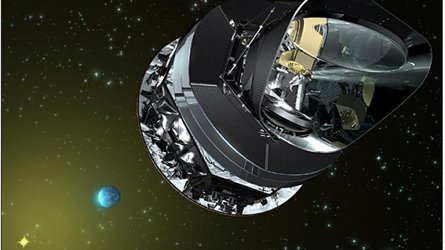The effect of cosmic structure on the cosmic microwave background
Did the photons travel freely ever since the CMB was released?
What happens when the CMB photons encounter structure in the cosmic web?
Do the CMB photons encounter other particles along their way?
Did the photons travel freely ever since the cosmic microwave background was released?
Yes, but they ran into a few obstacles along the way. The obstacles are due to the interaction of cosmic microwave background (CMB) photons with cosmic structure that formed since – mainly galaxies, galaxy clusters and the cosmic web in which they are embedded. These can happen in two ways: via the gravitational effect exerted by concentrations of matter, and via the interaction of photons with free electrons. These effects create additional fluctuations in the temperature of the CMB photons, by changing a bit of the information that they carry. But, at the same time, since these effects are produced by the structure that has formed in the Universe ever since the CMB was released, these additional fluctuations carry a wealth of information about the cosmic distribution of matter.

What happens when the cosmic microwave background photons encounter structures in the cosmic web?
Cosmic microwave background (CMB) photons are subject to ‘gravitational lensing’ as they cross the Universe and encounter the massive structures that start taking shape after the release of the CMB. Just in the same way as a magnifying glass works, massive structures like galaxy clusters can bend light from the CMB, either magnifying or demagnifying the ‘image’ of the CMB. This effect does not change the temperature of the photons, but it changes their trajectory and, eventually, washes out some of the information encoded in the CMB.
The distortion due to gravitational lensing affects the pattern of CMB temperature fluctuations on the sky. After careful analysis, Planck scientists can isolate the fluctuations that were created by gravitational lensing. Since they were imprinted on the CMB photons by the network of cosmic structure that pervades the Universe, these fluctuations carry all-important information about the distribution of matter on large scales in the Universe, especially during the last 10-12 billion years of its history.
Do the cosmic microwave background photons encounter other particles along their way?
Yes, but not at first. When the cosmic microwave background (CMB) was released, electrons became locked in atomic nuclei. Matter in the Universe remained neutral for several hundred millions of years. Then, after the first stars and galaxies formed, they provided a source of ultraviolet radiation that ionised hydrogen atoms and turned them back into protons and electrons. After this epoch of reionisation, the CMB photons encountered free electrons again, and were scattered off them. This effect also modifies some of the fluctuation patterns in the background CMB and must be taken into account to study both the primary patterns of fluctuations in the CMB as well as the history of the reionisation period.
Free electrons are also present in the hot gas inside galaxy clusters, which form in the densest knots of the cosmic web of matter that pervades the Universe. When CMB photons encounter free electrons in a galaxy cluster, the electrons have more energies than the photons, so when the photons scatter off them they gain energy (this is known as Inverse Compton scattering). This changes the energies of the CMB photons in a characteristic way. When looking at the CMB in the direction of a galaxy cluster, one observes a deficit, with respect to the average CMB signal, of low-energy photons, and a subsequent surplus of more energetic ones. Planck scientists exploit this phenomenon, called the Sunyaev-Zel'dovich effect, to search for galaxy clusters across the sky. Since galaxy clusters trace the cosmic web, the distortion that they imprint on the CMB can be used to refine our knowledge of the distribution of matter in the relatively recent history of the Universe.




